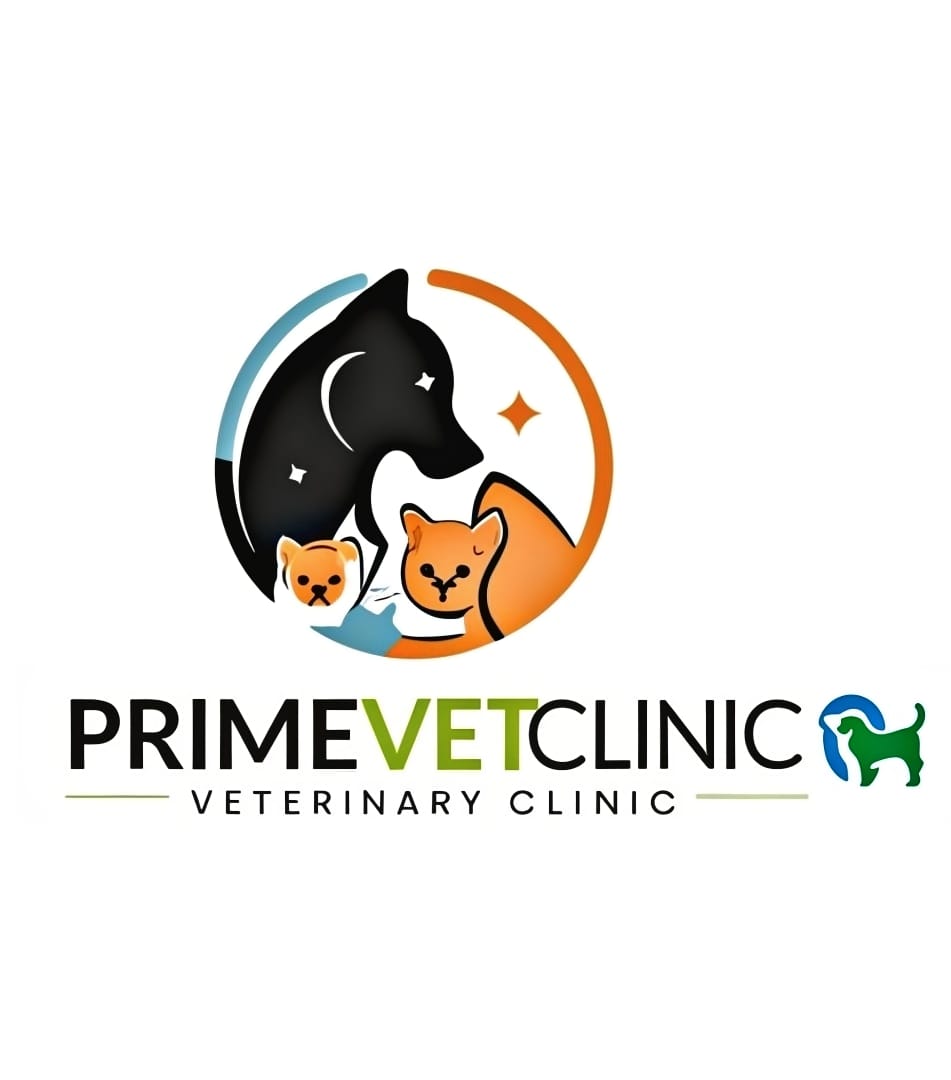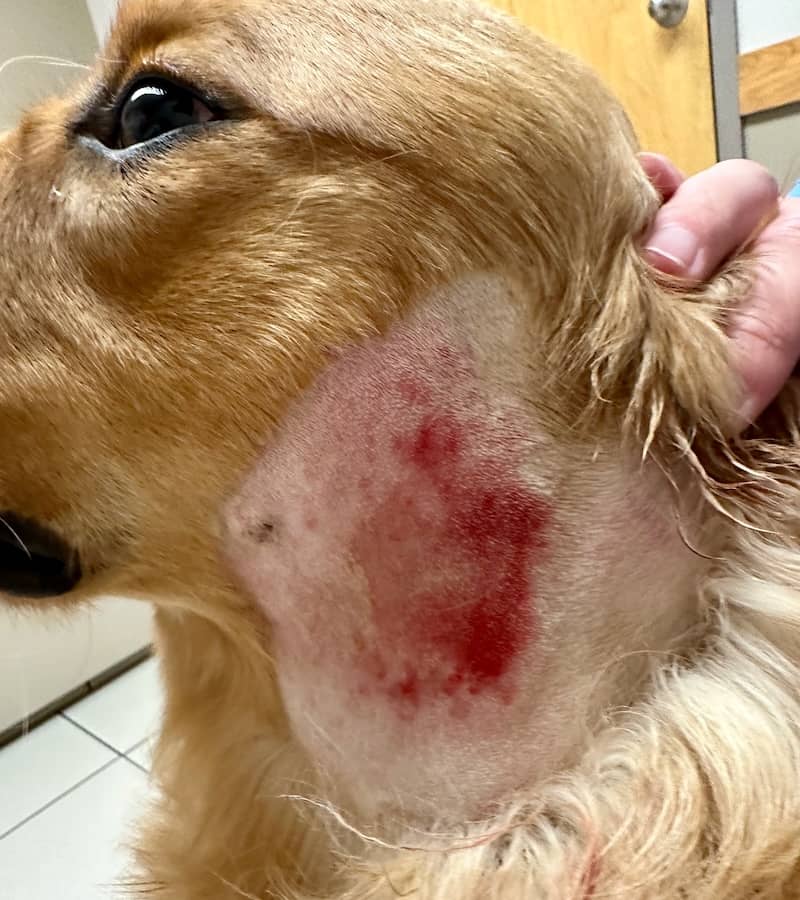


Posted by: admin on July 11, 2025
"Bacterial hotspots" in dogs, also known as pyotraumatic dermatitis or acute moist dermatitis, are common and rapidly developing skin lesions. While the term "bacterial hotspot" suggests a primary bacterial infection, it's more accurate to say that these are areas of skin irritation that become secondarily infected with bacteria, most commonly Staphylococcus pseudintermedius
Here's a detailed breakdown:
Hot spots are typically:
Red and inflamed: The affected skin will appear visibly red and irritated.
Moist and oozing: They often have a wet, weeping, or pus-like discharge.
Painful and itchy: Dogs will typically lick, chew, scratch, or rub the area excessively due to intense discomfort.
Rapidly developing: A small irritation can quickly escalate into a large, raw lesion in just a few hours.
Associated with hair loss: The constant licking and chewing, along with the inflammation, leads to hair loss in the affected area.
May have a foul odor: Due to the bacterial overgrowth and discharge.
Well-defined: They often have clear margins separating them from healthy skin.
Common locations include the head, neck (especially near the ears), hips, legs, and rump.
Hot spots are usually triggered by an underlying issue that causes the dog to intensely scratch, lick, or chew a specific area. This self-trauma then breaks the skin barrier, allowing normal skin bacteria to overgrow and cause a secondary infection.
Common underlying causes include:
Allergies:
Flea allergy dermatitis: Even a single flea bite can trigger an intense allergic reaction in sensitive dogs.
Environmental allergies (atopy): Reactions to pollen, dust mites, molds, etc.
Food allergies: Certain ingredients in their diet.
Parasites: Fleas, mites (e.g., Sarcoptes, Cheyletiella), ticks, or other insect bites can cause intense itching.
Moisture Trapping:
Swimming or bathing: If a dog with a dense or long coat isn't thoroughly dried, trapped moisture creates a humid environment perfect for bacterial growth.
Matted fur: Mats prevent air circulation and trap moisture against the skin.
Ear Infections (Otitis): Dogs with painful or itchy ear infections may scratch at their ears or the side of their face, leading to hot spots in those areas.
Poor Grooming: Neglected coats with tangles and mats can irritate the skin.
Underlying Pain or Discomfort:
Orthopedic problems: Dogs with arthritis or joint pain may lick the affected area to self-soothe.
Anal gland issues: Impacted or infected anal glands can cause dogs to lick their hindquarters.
Other skin irritations: Minor cuts, scrapes, or reactions to topical substances.
Behavioral Issues: Stress, anxiety, or boredom can lead to obsessive licking or chewing, even without an initial physical irritant.
Treatment aims to stop the itch-lick-scratch cycle, treat the bacterial infection, and address the underlying cause. It often involves
Clipping the Hair: The hair around and even a good margin beyond the hot spot needs to be carefully clipped. This allows the area to dry, improves air circulation, and makes it easier to clean and apply medications. This can be painful, so sedation might be necessary.
Cleaning the Lesion: The area is gently cleansed with an antiseptic solution, such as chlorhexidine. Human topical products like zinc oxide or some Neosporin formulations should be avoided as they can be toxic if licked by dogs.
Preventing Self-Trauma: An Elizabethan collar (E-collar or "cone") is crucial to prevent the dog from licking, biting, or scratching the healing hot spot.
Medications:
Topical medications: Sprays, creams, or ointments with antibiotics, anti-inflammatories (like corticosteroids), or drying agents are often prescribed.
Oral medications:
Antibiotics: To combat the bacterial infection, especially if the hot spot is large, deep, or not responding to topical treatment. The type and duration (often 3-4 weeks) depend on the severity and specific bacteria.
Corticosteroids: To reduce inflammation and intense itching, providing rapid relief.
Antihistamines: May be used to help with itching, although they are often less effective for acute hot spots than corticosteroids.
Addressing the Underlying Cause: This is critical for preventing recurrence. This might involve:
Year-round flea prevention.
Allergy management (dietary changes, environmental controls, allergy medications).
Treatment for ear infections or anal gland issues.
Improved grooming practices, especially for dogs with thick coats.
Addressing behavioral issues if relevant.
Prevention strategies are largely based on addressing the common causes:
Regular flea and parasite control.
Thorough drying after swimming or bathing, especially for long-haired or dense-coated breeds.
Regular grooming to prevent matting.
Prompt treatment of underlying conditions like allergies, ear infections, or anal gland issues.
Managing boredom or anxiety with appropriate exercise and mental stimulation.
While hot spots are typically superficial, they can spread quickly and become very uncomfortable for your dog. If you suspect your dog has a hot spot, it's best to consult a veterinarian for proper diagnosis and treatment to ensure a speedy recovery and prevent further complications.
Athour-
Prme vet clinic,indore
DR. KRISHNA KANT KANKAR
VETERINARIAN